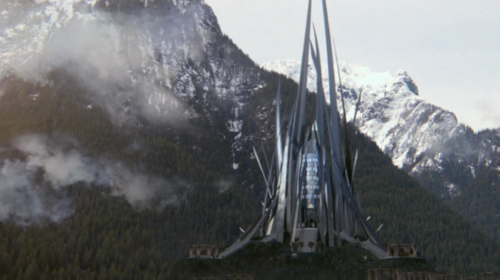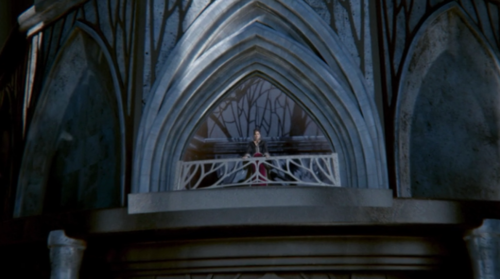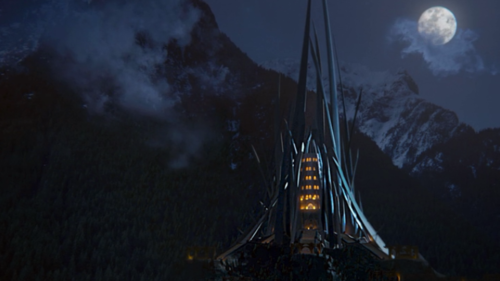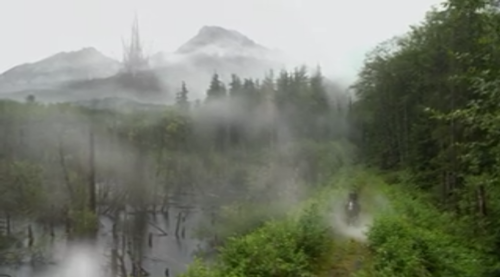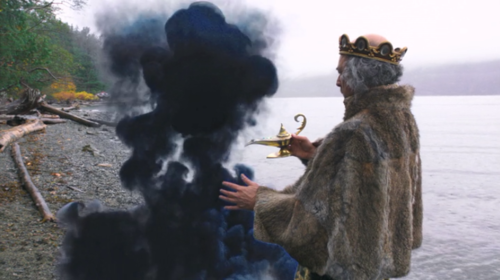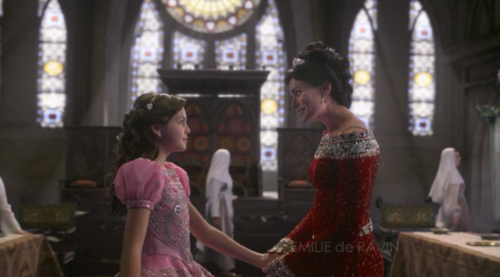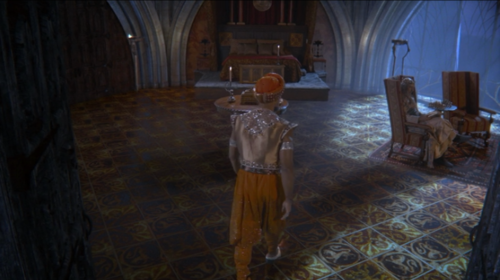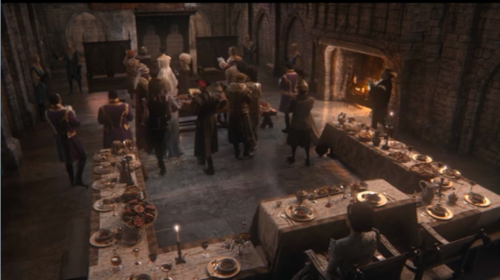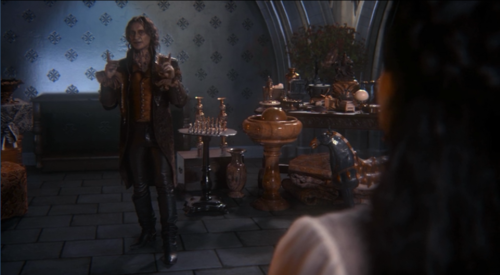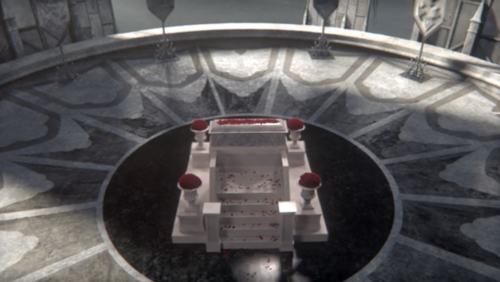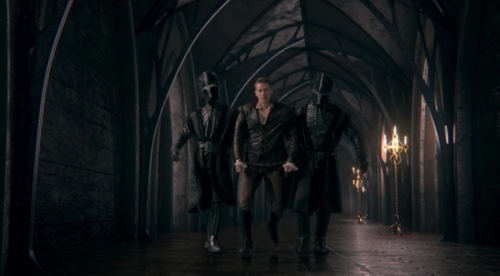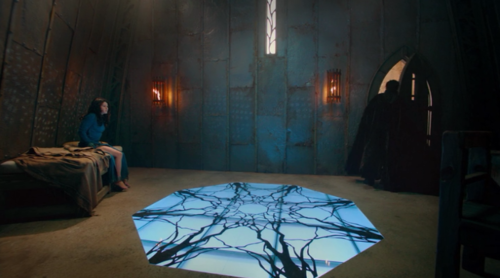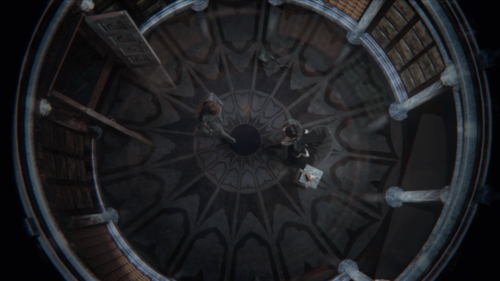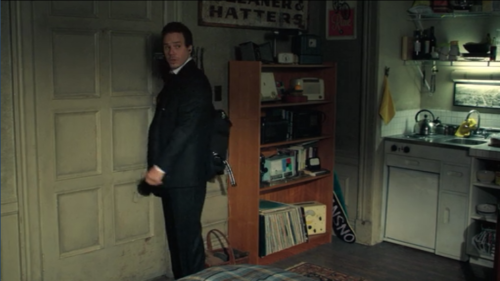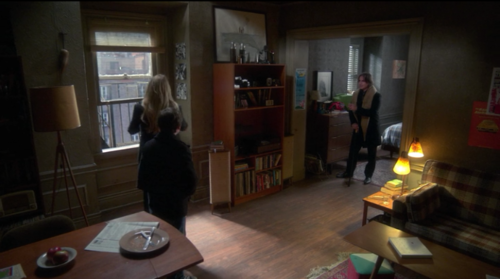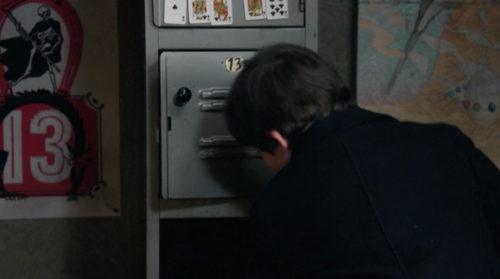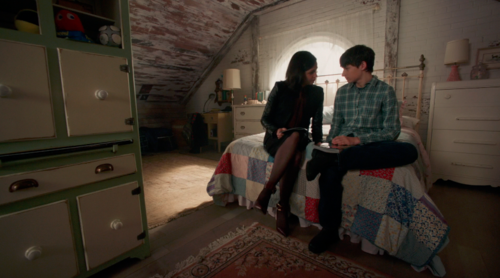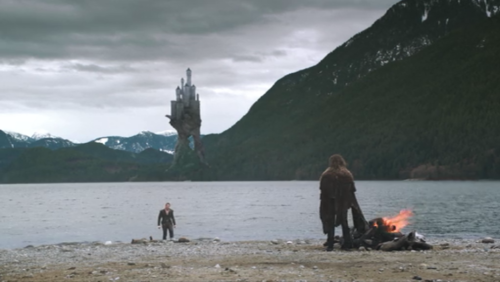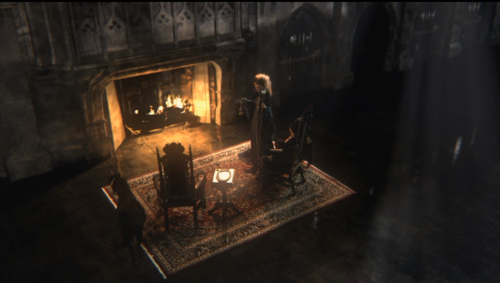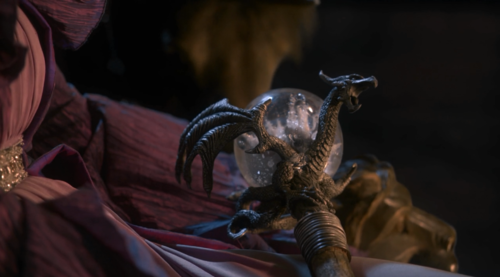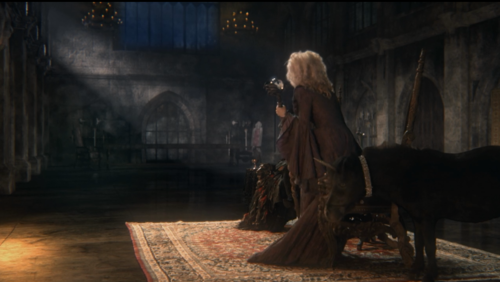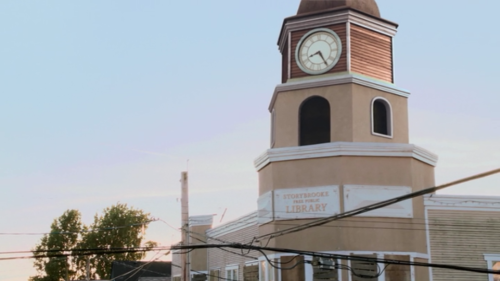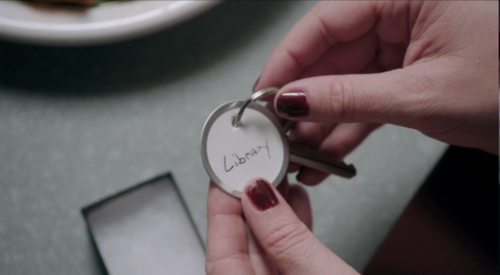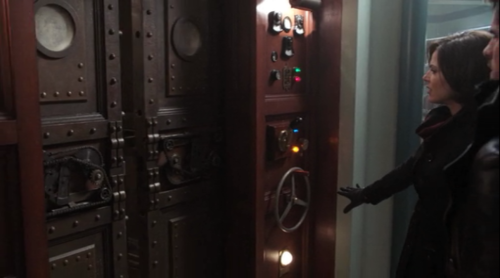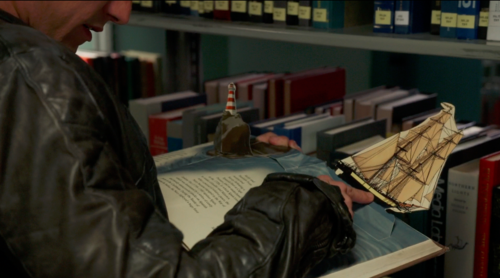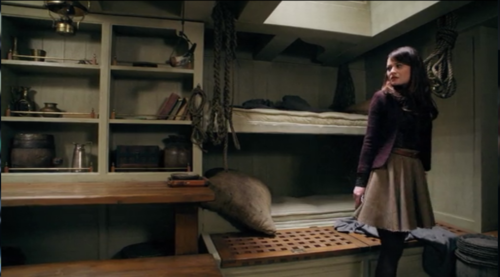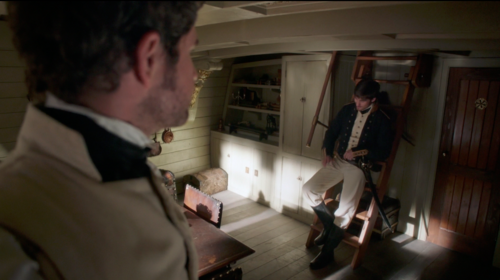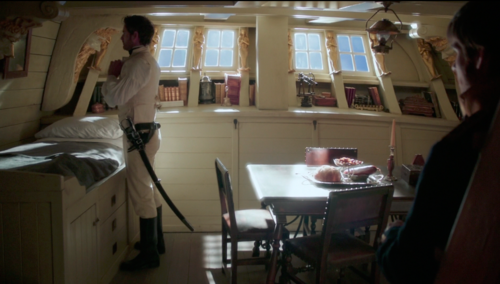I am running out of hiatus! Who ever thought that would actually
happen. I am also running out of locations to ramble about, but one of
the ones I really want to get to is the Storybrooke Library.
If you've been reading these, you've seen me banging on about
liminality, transitions, and
stories as containers.
Well, what is a library but a mammoth container for stories? There is a
thing in fiction called "literalizing the metaphor." It is one of the
OUaT writers' favorite tactics, and the library is an outstanding
example. It also has recurring links to the villains in the series.
That clock tower is CGI. They could have put it on any building in
town, but they chose to put it on the library, to make that location the
centerpiece of the first and last symbol-laden actions in S1. When Emma
first spends a night in Storybrooke, the clock begins to turn. When she
faces the dragon, she does so under the library.
Like
the well, the library stands on the border between Storybrooke and the
Enchanted Forest, and it functions on multiple levels.
"We may sit in our library, and yet be in all quarters of the Earth," Rumple quotes
John Lubbock to Belle. There is a natural link of course to the Disney
Beauty and the Beast, but in this case it is also literally true.
The
library contains infinite worlds in book form, but is also a physical
connection to the tunnels under Storybrooke. Those tunnels hold a dragon
-- even in a land without magic -- and Snow's coffin, giving them a
symbolic if not actual link with Regina's vault and to the Enchanted
Forest. They connect to
the beach, and so ultimately to other realms
via water. They contain the diamonds
that (however inconsistently) provide Storybrooke's magic.
Regina is mentioned at one point as having
closed
the library. The Dark Curse created, among its many other effects, a
fully stocked but shuttered small-town library; it's other worlds were
inaccessible, and its prominent clock never moved. This is Regina trying
to stop the universe again, to close all avenues of escape for those
subject to the curse, even mental ones. Perhaps a town that is entirely
closed-off and lost in time cannot afford to have people read too much.
Just as with her
vault,
however, she prefers to save things for future use rather than destroy
them. Hence the existence of the fail-safe spell and its unique
guardian.
Appropriately enough, events at the library tend to be heavily weighted with symbolic importance.
Emma
has the most iconic visit to date in the S1 finale. She takes a leap in
her individual Hero's Journey with a literal descent into the
underworld to fight a monster and retrieve nothing less than the essence
of True Love. This makes for a nice parallel with "Desperate Souls," as
I consider it Emma's knighting, and cognate with her accepting the
office of sheriff, keeping her dual self in balance.
Her
connection with the place is otherwise slim, however. In Season 2,
Rumple is instrumental in re-opening the library, just as he was in
bringing a more literal form of magic to Storybrooke. He has nothing to
fear from anything within; if anything, the Dark One has more experience
with and understanding of how stories are shaped than any other
character.
It is Belle who has the key to the place, and by
first forming her connection with the library in 2.04, they draw a
subtle connecting line between Belle and Milah, both of them looking for
worlds beyond what they know. "The Outsider" makes a further parallel
between Belle's encounter with Hook in the library and her first
encounter with the Yaoguai -- at that time, seen as an uncomplicated
monster. (Which makes Rumple Mulan for that moment? Sometimes the
structural parallels in this show get weird.)
The library is at
one point the cursed dagger's hiding place -- both the map and the thing
itself reside there, and the clock tower is where Cora acquires it. It
is also where Rumple attempts his ritual to free himself from the
artifact's control. Tunnels and stars connect there; the library touches
heaven and hell.
When Regina goes to face the dragon of her
own creation, to retrieve her own tool for ultimate destruction, she
does not go alone or bearing a sword; she brings someone expendable.
(I
am tempted to read something into the fact that so many events at the
library to date have involved Hook. Rogue characters tend to be
comfortable with borders. Which brings us to our next point....)
I
could not have been more excited than I was when they directly
addressed the unstable nature of reality in this particular library with
Will and Robin. The fact that it was there, surrounded by the
paper-bound incarnations of worlds we have been told are all literally
real somewhere, that they found the alternate page of the book, made me
squee as much as anything ever has.
And
one of the things I'm most dying to know is whether this is just an
Easter egg, or whether Will finding a picture of a brig with a yellow
stripe in this exact moment -- when it seems like reality blinked long
enough for someone to slide a page into Robin's pack -- is
meaningful.
